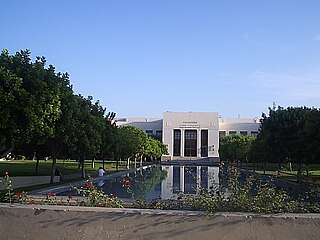This article needs additional citations for verification .(February 2017) (Learn how and when to remove this template message) |
Trade Adjustment Assistance Community College and Career Training (TAACCCT) is a U.S. Department of Labor grant program [1] for community colleges in the United States.

A community college is a type of educational institution. The term can have different meanings in different countries: many community colleges have an “open enrollment” for students who have graduated from high school. The term usually refers to a higher educational institution that provides workforce education and college transfer academic programs. Some institutions maintain athletic teams and dormitories similar to their university counterparts.
TAACCCT grants are designed to help workers eligible for training under the Trade Adjustment Assistance (TAA) for Workers program, as well as other adults. Every U.S. state received funding for each of four years through 256 grants totaling $1.9 billion. TAACCCT grants, which continued through September 2018, are impacting 60% of the nation's publicly funded community colleges and building industry-aligned programs in manufacturing, healthcare, information technology, energy, transportation and other industries.
Trade Adjustment Assistance (TAA) is a federal program of the United States government to act as a way to reduce the damaging impact of imports felt by certain sectors of the U.S. economy. The current structure features four components of Trade Adjustment Assistance: for workers, firms, farmers, and communities. Each cabinet-level department was tasked with a different sector of the overall Trade Adjustment Assistance program. The program for workers is the largest, and administered by the U.S. Department of Labor. The program for farmers is administered by the U.S. Department of Agriculture, and the firms and communities programs are administered by the U.S. Department of Commerce.

Manufacturing is the production of products for use or sale using labour and machines, tools, chemical and biological processing, or formulation, and is the essence of secondary industry. The term may refer to a range of human activity, from handicraft to high tech, but is most commonly applied to industrial design, in which raw materials from primary industry are transformed into finished goods on a large scale. Such finished goods may be sold to other manufacturers for the production of other more complex products, or distributed via the tertiary industry to end users and consumers.
Information technology (IT) is the use of computers to store, retrieve, transmit, and manipulate data, or information, often in the context of a business or other enterprise. IT is considered to be a subset of information and communications technology (ICT). An information technology system is generally an information system, a communications system or, more specifically speaking, a computer system – including all hardware, software and peripheral equipment – operated by a limited group of users.
Through TAACCCT, community colleges have developed or redesigned nearly 2,600 Programs of Study to help adults learn skills to lead to employment. Each college or consortium of colleges developed programs of study aligned with local and regional business needs, which were identified through partnerships formed or strengthened with grant funds.
To help adult students obtain industry-recognized credentials more quickly, colleges are using TAACCCT funding to provide career pathways, credit for prior learning, competency-based models, online training, and student support systems. The curriculum and other learning materials developed by TAACCCT grantees are available to all types of training providers on SkillsCommons.org, as described in a recent ETA Training and Employment Notice.

In education, a curriculum is broadly defined as the totality of student experiences that occur in the educational process. The term often refers specifically to a planned sequence of instruction, or to a view of the student's experiences in terms of the educator's or school's instructional goals. In a 2003 study, Reys, Reys, Lapan, Holliday, and Wasman refer to curriculum as a set of learning goals articulated across grades that outline the intended mathematics content and process goals at particular points in time throughout the K–12 school program. Curriculum may incorporate the planned interaction of pupils with instructional content, materials, resources, and processes for evaluating the attainment of educational objectives. Curriculum is split into several categories: the explicit, the implicit, the excluded, and the extracurricular.
The Department of Labor aims to strengthen institutions of higher education so they can provide greater economic opportunity by acquiring the skills, degrees, and credentials needed for high-wage, high-skill employment. The department is implementing the TAACCCT program in partnership with the U.S. Department of Education.






